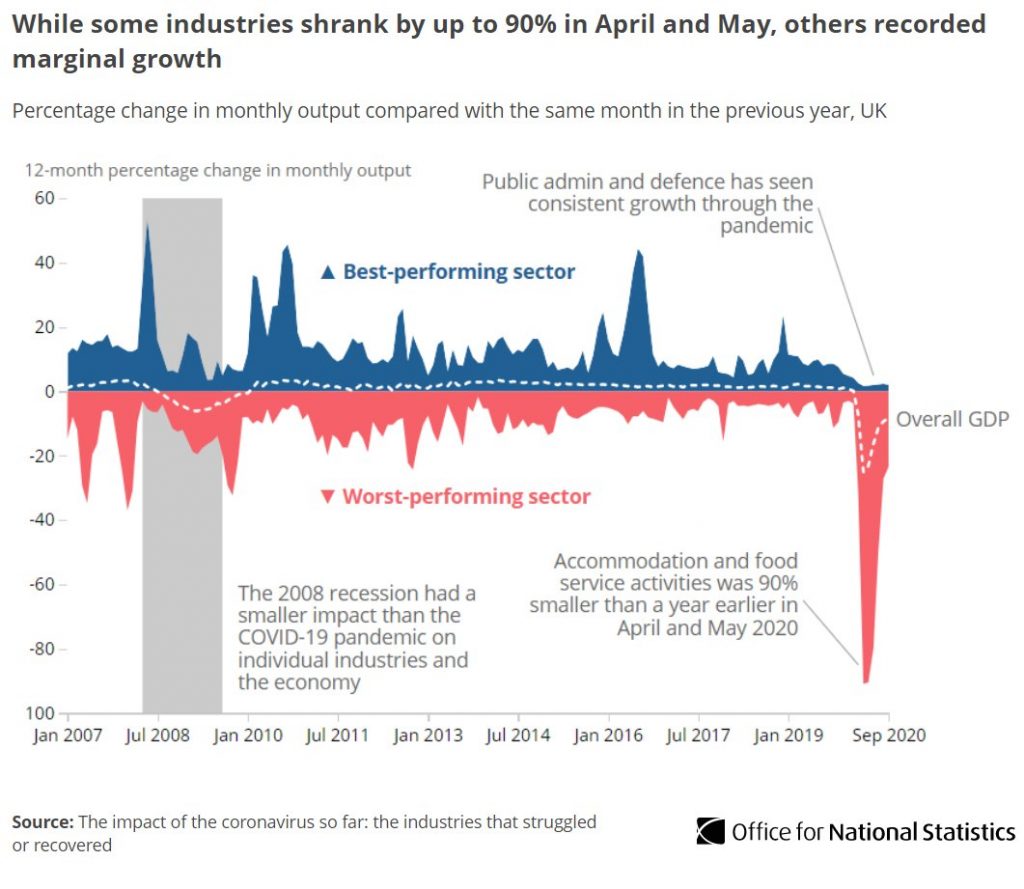Stats roundup: the impact of Covid-19 on ecommerce
The acceleration of ecommerce throughout the globe over the course of 2020 was hard to ignore, as consumers shopped online often out of necessity, and brands were forced to rapidly change their strategies as a result.
From consumer behaviour to demand prediction to retention, the events of the last year have altered or sped up almost every facet of online retail.
We’ve rounded up a selection of stats to try to illustrate how the pandemic has impacted, and continues to impact, the ecommerce industry, dating back to April 2020. We’ll update this post regularly as the world of online shopping continues to evolve throughout 2021.
You can also read Econsultancy’s marketing and advertising stats roundup, again looking at the impact of Covid-19.
Click the contents below to jump between sections…
- Ecommerce penetration
- Grocery
- Amazon and marketplaces
- Black Friday and Singles Day 2020
- Fashion and department stores
- Customer experience
- China
Ecommerce penetration
UK online sales growth hits 13-year high at +36.6% year-on-year for 2020
Total online sales growth in the UK rose by 36.6% year-on-year in 2020 – the largest growth seen since 2007, according to data from the IMRG Capgemini Online Retail Index.
After unprecedented uptake of online shopping out of necessity, local and national lockdowns throughout November and December (traditionally the busiest shopping period of the year) helped to boost the overall yearly figure to even loftier heights. Online retail sales in December remained slightly higher than the year average at +37%, while Black Friday events caused November to take the crown for peak performance at +39%.
Multichannel retailers saw a particularly bumper year for online sales, seeing them surpass the rate of growth of online-only competitors for the first time since 2017 (+57% year-on-year vs. 9.1%). Categories that experienced the greatest success over 2020 were garden (+222.5%) and electricals (+90.8%), the former of which is typically sold by multichannel retailers. However, online sales of clothing performed quite poorly, up just 1.3% in 2020 compared to growth of 8.2% the year before.
There was also good news for mobile commerce, which saw a huge 73% year-on-year uplift after many stagnant years.
Cross-border ecommerce sales grew by 82% year-on-year in 2020
Data from eShopWorld has revealed that cross-border ecommerce sales grew 82% year-on-year in 2020, as globally optimised retailers cashed in on new opportunities.
Sales analysis shows international online shopping slowed quite dramatically in March 2020 before picking up at speed again in April and remaining high throughout the rest of the year. In April alone, cross-border sales exceeded 100% year-on-year growth before peaking at +141% in July.
A survey of over 22,000 consumers from 11 different countries found that 52% claimed to have made six or more cross-border purchases online since the beginning of 2020. Respondents cited lower cost (such as taxes and shipping) and better availability of products than in their home region as key purchase drivers.
The Phillipines ranked highest in the top 10 growing markets for international online sales, experiencing a whopping 258% year-on-year growth in 2020. This was followed by Morocco, Chile and Puerto Rico at 215%, 211% and 203% growth respectively.
US ecommerce penetration accelerated by 10 years in 90 days in Q1 2020
The rate of ecommerce penetration in the US grew by 10 years in a 90-day period in 2020, reaching around 33%, according to data from McKinsey.
The result of this acceleration, brought about by rapid digital transformation, has caused the gap in corporate profits between the best and worst performing brands to widen further than ever before. In total, McKinsey predicts the top quintile of industries that has fared well over the course of the pandemic could accumulate $335 billion additional profit, while the quintile that has fared the worst could lose $303 billion.
Organisations that have invested in superior customer experiences, following the shock of the coronavirus outbreak, have emerged stronger than they did before it began. It is thought that these brands have seen triple cumulative shareholder returns against other companies, according to analysis.
These figures are despite very volatile retail performance over the past year, with April seeing the largest drop in US retail sales ever recorded. Fifty percent of American households are reported to be actively reducing their household spend, while a further 20% have abandoned past brand loyalty in favour of others that were more convenient, inexpensive or had better stock availability.https://platform.twitter.com/embed/Tweet.html?dnt=true&embedId=twitter-widget-0&frame=false&hideCard=false&hideThread=false&id=1325732364530683904&lang=en&origin=https%3A%2F%2Feconsultancy.com%2Fstats-roundup-the-impact-of-covid-19-on-ecommerce%2F&theme=light&widgetsVersion=889aa01%3A1612811843556&width=550px

original article form : https://econsultancy.com/stats-roundup-the-impact-of-covid-19-on-ecommerce/